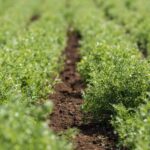Maintaining and improving soil health is crucial for sustainable farming. In South Africa, where varying climates and soil types present unique challenges, understanding and adopting effective soil management practices is essential. Healthy soil not only supports better crop yields but also improves resilience against climate change. Here’s a comprehensive guide for South African farmers on how to improve soil health.
1. Practice Crop Rotation
Crop rotation involves growing different types of crops in the same area in sequential seasons. This technique helps prevent the depletion of specific nutrients, disrupts pest and disease cycles, and promotes a balanced soil structure. For example, alternating maize with leguminous crops like beans can help replenish nitrogen levels naturally.
2. Adopt Cover Cropping
Cover crops such as clover, vetch, or rye can be planted during off-seasons to protect and enhance soil health. These crops help prevent erosion, improve soil organic matter, and facilitate nutrient cycling. The roots of cover crops also aid in maintaining the soil structure, allowing water to infiltrate more effectively.
3. Incorporate Organic Matter
Adding organic matter like compost, manure, or plant residues enriches the soil with essential nutrients and improves its texture. Organic matter supports beneficial microorganisms, boosts soil fertility, and enhances moisture retention, which is particularly beneficial in drier areas of South Africa.
4. Reduce Tillage Practices
Excessive tillage can degrade soil structure, lead to erosion, and reduce organic matter content. Adopting conservation tillage or no-till farming helps maintain the natural structure of the soil, encourages microbial activity, and minimizes disturbance to the ecosystem.
5. Implement Agroforestry Techniques
Integrating trees and shrubs into farming systems can significantly benefit soil health. Trees not only protect the soil from erosion with their root systems but also contribute organic material through leaf litter and enhance water retention. Agroforestry is especially effective in semi-arid regions, where it can provide shade and improve the microclimate.
6. Utilize Mulching
Mulching involves covering the soil surface with a layer of organic material like straw, leaves, or wood chips. This practice helps retain moisture, regulate soil temperature, and reduce weed growth. Over time, mulch breaks down and contributes to the soil’s nutrient content.
7. Balanced Nutrient Management
Regular soil testing should be conducted to monitor nutrient levels and soil pH. This practice helps determine the specific amendments needed, ensuring that fertilizers are applied in the right quantities. Overuse or misuse of chemical fertilizers can lead to soil acidification and a decline in microbial diversity. Opt for a balanced approach that integrates organic fertilizers wherever possible.
8. Promote Biodiversity
Encouraging a variety of plant species in your fields and on the farm increases resilience and enhances the biological processes within the soil. Biodiverse systems support a wide range of beneficial insects and microorganisms that contribute to soil health. Planting hedgerows and buffer strips with native grasses and flowers can aid in achieving this balance.
9. Manage Water Wisely
Efficient irrigation practices are key to maintaining soil health. Over-irrigation can lead to nutrient leaching and waterlogged soils, while under-irrigation stresses plants and leads to poor growth. Implementing drip irrigation or other water-saving techniques ensures that water reaches plant roots without causing harm to the soil structure.
10. Control Soil Erosion
Erosion poses a significant threat to soil health, particularly in hilly or overgrazed areas. Farmers can prevent erosion by planting cover crops, using contour farming methods, and constructing terraces. Windbreaks, such as tree lines, can also protect against wind erosion in open, flat fields.
Improving soil health is an ongoing process that requires a blend of traditional wisdom and modern agricultural practices. By implementing these strategies, South African farmers can enhance the productivity and sustainability of their land. Healthy soil is not just an asset for individual farmers but a key component in securing the future of the country’s agricultural sector.








